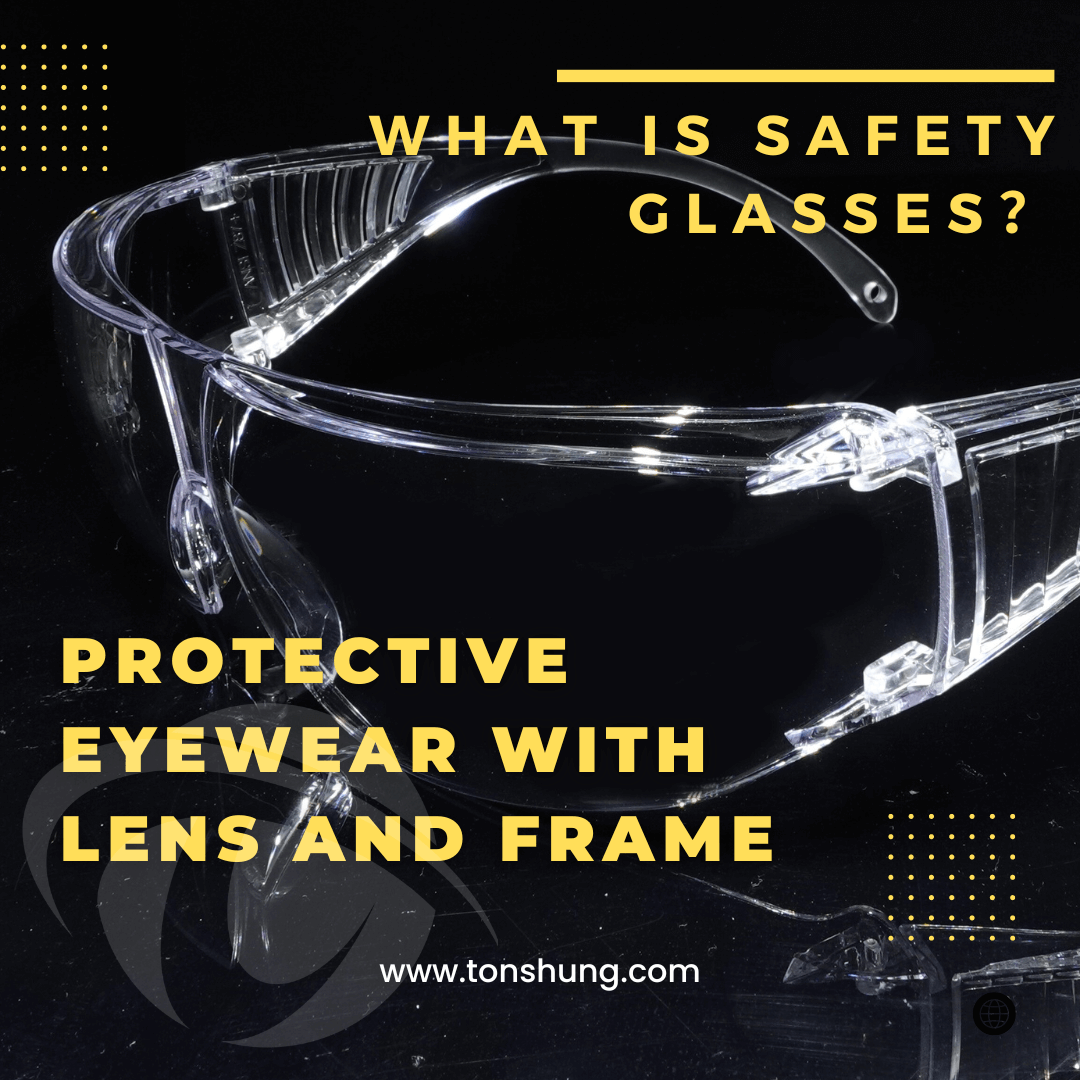Safety glasses are protective eyewear
Safety glasses and goggles are made to protect user direct contact from flying objects, hazardous liquids, gasses, or other harmful material. The safety eyewear should resist impact and crack from flying objects and hazardous materials.
The following occupation should consider wearing the safety eyewear and other required devices during operating. Such as carpenters, electricians, machinists, plumbers, grinding machine operators, welders, chemical handlers, and laser device/machine operators.
The type of safety eyewear:
Safety glasses :
- Standard
- Functional
- Fit over the glasses
- The glasses with side shield
Safety goggles:
- Direct
- Indirect
- Non-vented
The making flow of safety eyewear can summarize into four parts:
- Concept design
- Molding manufacturing: Lens and frame/temple
- Production: plastic injection, assembly, and package
- Optical and physical testing
Learn More: Safety Glasses Vs Safety Goggles: How To Know The Difference
How safety glasses are made?
Safety glasses are composed of two main parts: the lens and the frame/temple. These parts are manufactured to match international standards of protection against various types of hazards. Different materials are chosen according to the type of protection required.
When it comes to lenses, there are mainly 4 options: Polycarbonate lenses are the most frequently used since the material offers great all-around performance. It is resistant to scratches, lightweight, and durable. But other options offer unique advantages. For example, Trivex lenses are known for a clearer lens, allowing for a better field of vision, but at the cost of hardness. On the other side, glass lenses offer great clarity and resistance to scratches, but lack impact resistance. They are ideal to use in a lab, where solid projections are not a problem for instance. CR 39 is a polymer created as an improvement to glass. It provides most of the same characteristics, for half the weight of traditional glass.
| Comparison of lenses materials | |
| Materials | Characteristics |
| Polycarbonate |
· Inherent UV protection |
| Hi-Vex |
|
| Trivex |
|
| Glass |
|
| CR-39 plastic |
|
Source: CSA Z94.3.1-16 Norm, Guide to the selection, use, and maintenance of eye and face protection, 2016.
The frames are also important for safety glasses, in most cases they are designed around the dimensions and demands of the lens. To guarantee that the standards are met, the frame will be tested as separate component and as a finished product.
Frames are usually made of a different material than the lens, to allow for more durability. Materials used are required to be flexible and shatter-free, as per the Z87 and EN166 standard. In majority of cases, they are made of polymer, allowing for a durable and sturdy plastic frame. They are required to withstand both low and high impact situations and to keep the lens attached to the frame under stress.
Learn More: Types of Safety Glasses: Four Ways to Choose The Best for You
Learn More: Safety Glasses Standards: Guide To Buy A Safety Glasses
Where to find a safety glasses manufacturer?
At Tonshung technologies we offer a wide range of protective eyewear, from OEM to ODM that you can choose from. We propose multiple products which matches all the standards for different markets, and we will produce the protective eyewear you need to match your requirements.
For any information, please contact us or use info@tonshung.com.

